View from the Hill 10th January 2018
Readers may recall my report of a farmers trip to Eastern Germany back in the autumn, one farmer we met originated from West Germany, he took up the Government’s offer to move to the East shortly after the wall fell 20 years ago. He has borrowed a lot of money and built himself an impressive business. He farms 900ha of arable and forage crops, to feed his cows, to sell into the local grain markets, and to feed to his biodigester. This last he feeds a mixture of cow manure and crops, all mixed up into a carefully calculated ration, just as he does for his cows, although they don’t get fed manure of course. He described the digester as being the equivalent of 380 cows, and is a lot easier to manage.
A digester could be said to be like a huge concrete cow, you feed it, and it produces energy in the form of captured methane, fertiliser and heat (a by-product of the generator that turns the methane into electricity), instead of the methane, muck and milk produced by the cows. If someone could crack the problem of how to capture the methane emitted by the cows, perhaps we could save ourselves a lot of bother. The farmer sells the heat he produces to 22 local houses for heating, and the electricity generated goes into the grid. The digestate once exhausted is spread on his land as fertiliser.
We were impressed with the local aspects of the biodigester operation, it is fed with crops and manure from the one farm, and the heat and electricity supplies local homes. There are some digesters which have been built in England which are so large that they need to buy in crop from far and wide, and the digestate is shipped many miles to farms where it can be spread.
I like the idea of supplying heat to local homes. It would be even neater to inject the methane generated by the digester directly into the gas main to supply local houses. This is much more efficient than it is to burn the gas in an engine to turn it into electricity.
In our case this would mean building a digester right on the edge of Durweston, to be close to the gas main, I wonder how many people would support this?
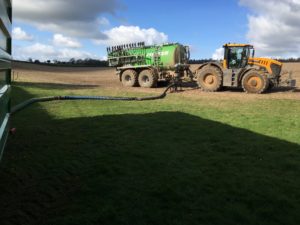 Last year we bought some digestate from a large digester, to try out the product and to see how the operation would run. The company delivered the gungey liquid by lorry, pumped it into a huge nurse tank on the headland of the field, where the tanker/spreader loaded up, 18,000 litres at a time, then it applied it at around 15,000 litres per hectare onto stubble, soon to be planted with spring barley. The nutrients carried in the digestate reduced the need to apply bag fertiliser to those fields. As far as it is possible to accurately assess the effectiveness, the crops grown with digestate appear to have yielded just as well as those without.
Last year we bought some digestate from a large digester, to try out the product and to see how the operation would run. The company delivered the gungey liquid by lorry, pumped it into a huge nurse tank on the headland of the field, where the tanker/spreader loaded up, 18,000 litres at a time, then it applied it at around 15,000 litres per hectare onto stubble, soon to be planted with spring barley. The nutrients carried in the digestate reduced the need to apply bag fertiliser to those fields. As far as it is possible to accurately assess the effectiveness, the crops grown with digestate appear to have yielded just as well as those without.
We also tried out some digestate on growing winter crops, again to reduce the need for bag fert. This was not such a success, because the wheelmarks made by the machine whilst spreading were so bad that we feel sure they affected the final yield. This particular machine only spreads at 12 metres width, which creates far too many wheelmarks. Our tramlines are spaced at 36 metres. 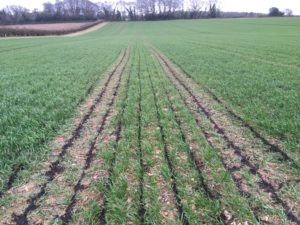
Returning to Berlin each evening, and having a bit of a wander was almost more interesting than the agriculture, the Holocaust memorial was very sobering, grim frankly, everyone should visit it to remind us of how evil man can be. As if that wasn’t enough, imagining the city divided by that wall for 30 years was quite challenging. Its route is marked on the ground through the city by a double line of bricks.
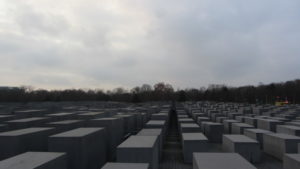 The Holocaust memorial, Berlin
The Holocaust memorial, Berlin
A recent scientific paper has some interesting observations:
A meta-analysis of life cycle assessments that includes 742 agricultural systems and over 90 unique foods produced primarily in high-input systems shows that, per unit of food, organic systems require more land, cause more eutrophication, use less energy, but emit similar greenhouse gas emissions (GHGs) as conventional systems; that grass-fed beef requires more land and emits similar GHG emissions as grain-feed beef; and that low-input aquaculture and non-trawling fisheries have much lower GHG emissions than trawling fisheries. In addition, our analyses show that increasing agricultural input efficiency (the amount of food produced per input of fertilizer or feed) would have environmental benefits for both crop and livestock systems. Further, for all environmental indicators and nutritional units examined, plant-based foods have the lowest environmental impacts; eggs, dairy, pork, poultry, non-trawling fisheries, and non-recirculating aquaculture have intermediate impacts; and ruminant meat has impacts ~100 times those of plant-based foods. Our analyses show that dietary shifts towards low-impact foods and increases in agricultural input use efficiency would offer larger environmental benefits than would switches from conventional agricultural systems to alternatives such as organic agriculture or grass-fed beef.

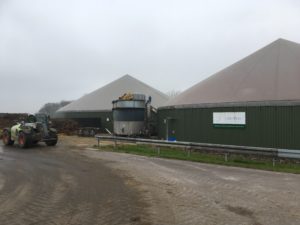
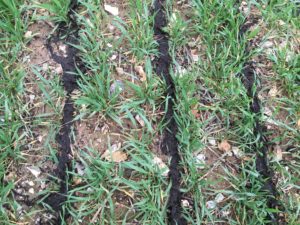

Which Journal is the above from please?
Along time ago when I was at university there was a funny little chap studying horticulture. He was in a society called Cylops I believe – An Eye to the Future – not a bad strap line, anyway we all had a good laugh at the sandal beardies and their strange ideas. I think he did some special project on alternative sources for agricultural energy which included bio-digesters, which as you have just pointed out was complete cobblers
Wow George I applaud the article. In brief a bio-digester on the dge of the village is unlikely to be well received, see episodes from The Archers two years ago. Try offering the village school free heat. The meta analysis of energy used for food production comes as no surprise; that data has been around for a while. Perhaps a subscription to Friends of the Earth next Christmas? I am no advocate of compulsory vegetarianism but no meat Monday or no meat Monday to Wednesday makes some sense. And more to the point if you are going to eat meat eat the whole animal so don’t grow sheep which were only ever introduced for wool with their decided lack of micro- beads. If you do a similar analysis of fishing and fish farming you discover the best place to farm fish is out of the sea in tanks where you can control parasites and water pollution and feed the fish on a feed that does not require trawling up small fish from the sea where they are better left to grow into big fish.
Right now to digest. I have no knowledge of this material but does it contain nutrients and if so in what form? Does it add fibre to the soil? I mean what is in it?
I am assuming for your conference In Easter 2019 there will be guest speakers and symposia on these matters. I know someone who could talk about bees; Mike Frenchie think he is called.
Neptune